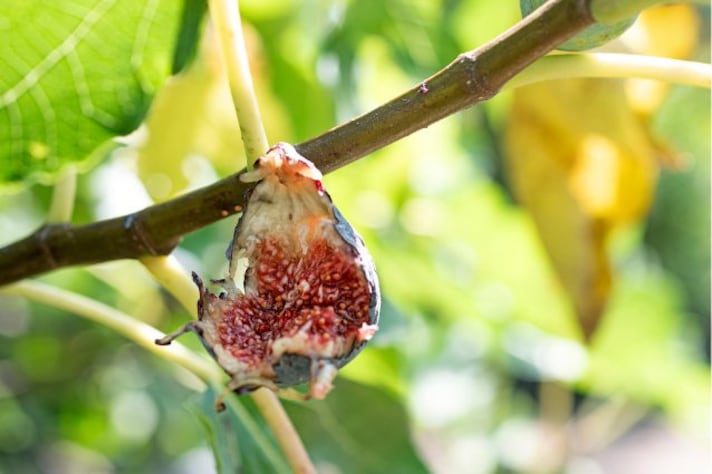Do Figs Really Have Dead Wasps Inside?
The question of whether there are dead wasps in figs often arises due to the unique relationship between fig trees and fig wasps. Let's find out what the actual truth is!

Figs are a delightful fruit enjoyed worldwide for their sweet taste and unique texture. However, a common question that occasionally surfaces is whether figs contain dead wasps. This question stems from the fascinating but complex relationship between fig trees and fig wasps. In case you're worried about finding a dead wasp inside of your figs, read ahead to debunk this myth!
The Relationship Between Fig Trees and Fig Wasps
Figs and fig wasps share a unique and intricate mutualistic relationship. Fig trees rely on fig wasps for pollination. This relationship is so specialized that the two cannot reproduce without each other.
Here's how it works: Fig trees produce specialized flowers inside an enclosed structure called a syconium, which is what we commonly refer to as a fig. Female fig wasps enter the fig through a tiny opening called the ostiole to lay their eggs inside the flowers. In the process, they inadvertently pollinate the flowers. The eggs hatch and larvae develop within the fig's flowers. Once mature, the new generation of wasps exits the fig, carrying pollen to other figs to continue the cycle.

What Happens to the Wasps?
Many people are concerned about the presence of dead wasps in figs, but here's the reassuring truth: When you eat a fig, you generally do not find dead wasps inside it.
Female fig wasps lay their eggs inside the fig’s flowers, but they do not survive the process. The larvae develop within the fig, and when they mature, they emerge from the fig to find new figs for their own reproduction. The few dead wasps you might find are remnants of males who do not leave the fig, but they are typically so tiny and decomposed that they are not noticeable.
The fig tree’s natural process involves breaking down these wasps. The enzymes and the fig's internal environment break down the wasps' bodies into components that become part of the fig itself. This process ensures that by the time the fig is harvested, any remains of wasps are unrecognizable and fully decomposed.

Figs are thoroughly washed and processed before they reach consumers. The commercial fig production process further ensures that any small remnants are removed, and the fruit is cleaned.
So… Myth or Truth?
The idea that you are eating dead wasps when you consume figs is more myth than reality. While it is true that fig wasps play a crucial role in the fig’s lifecycle, the wasps’ presence in the final fruit is either minimal or non-existent due to the decomposition process. The fig’s internal mechanisms and processing ensure that what you enjoy is a delicious fruit without any noticeable traces of wasps.
;Resize,width=767;)


;Resize,width=712;)
